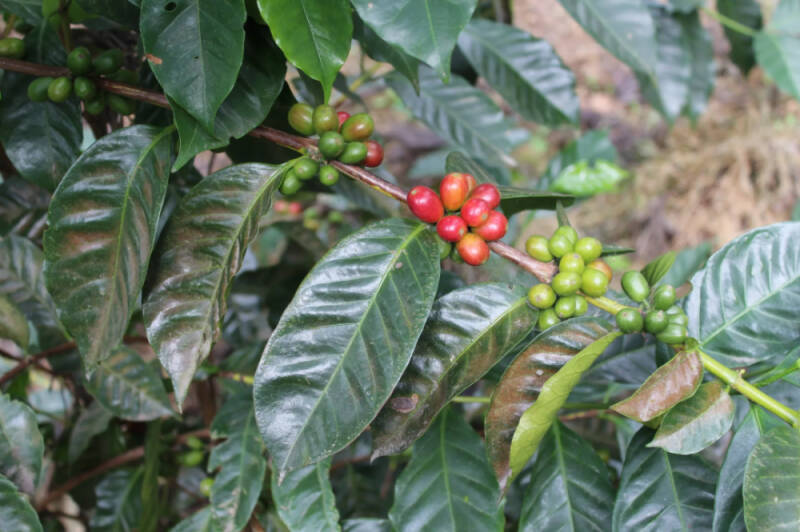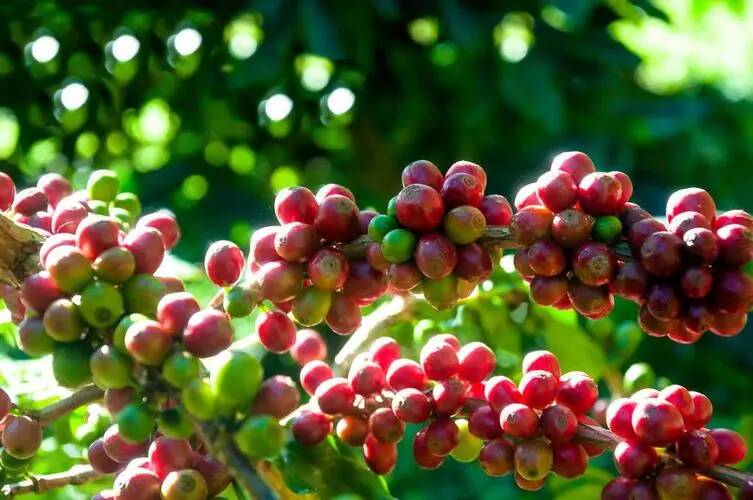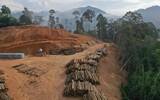Introduction to the Development History, varieties, Gold Standard and Red Standard of Rosa Village in Ethiopia
Rose varieties were first collected from the coffee forests of Ethiopia in the 1930s. From there it was sent to the Lyamungu Research Station in Tanzania and then taken to Centro Agron ó mico Tropical de Investigaci ó n y Ense ñ anza (Centre for Research and higher Education in Tropical Agriculture) in Costa Rica in 1953, but was recorded as T2722. After people recognized the tolerance of the variety to coffee leaf rust, it was distributed to Panama through CATIE in the 1960s. However, because the branches of this variety of plants are very fragile and are not favored by farmers, they are not widely planted. Until 2005, Emerald Manor used rose summer varieties to participate in BOP competitions and bids. The unusually high score made the bean famous.

But with the exception of Panama, Costa Rica, Colombia and other countries have planted rose summer, but when it comes to rose summer, we have to mention Ethiopia's rose summer village manor.
In Gesha Village Coffee Estate2007 year, director Adam Overton and photographer wife Adam Samuel came into contact with Bench Maji region in the westernmost part of Ethiopia, near South Sudan, while shooting a documentary about Essex for the Ethiopian government, and discovered the Gori Gesha Forest Forest in this area, so they had the idea to create their own coffee estate and brand. In 2009, they met mule landowner and BOP judge Willem Boot, and Willem Boot's idea provided an opportunity for the Overton to return to Ethiopia to find the birthplace of Rose Summer, and finally to Banchi Maggie, an area known as Gesha Village, probably the most primitive area of Rose Summer. They searched in the forest around the manor and found wild Rosa, which they later learned was the place where Rosa was first found. So they collected seeds from the native rose summer, screened them, and then planted them in the rose summer village. And decided to build the estate here, a 475-hectare coffee farm about 12 miles from the Gori Gesha forest, and named it Gesha Village Coffee Estate.
There are three varieties in Guoxia Village, Gesha1931, Gori Gesha and Illubabor. Gesha1931 (G31) can be traced back to the origin of Rose Summer, which was collected from the rose forests of Ethiopia on the British border in 1931 and traveled to Panama after several turns. Later, the native species Rosa found by Adam Overton and Willem Boot near the manor was very close to the Panamanian variety by genetic comparison, so it was named Rosa 1931.
Gori Gesha (GG) discovered that in 2011, after the Adam couple established the Rosa Village estate, they found a bean that looks like Rosa 12 miles away in Gori Gesha, which was named Gori Rosa "Gori Gesha" because it was found in the Gori Rose Forest.

Illubabor Forest 1974 (IF) was discovered during an expedition in the Illubabor Forest in 1974, and a variety with antibodies was later developed by the Ethiopian Research Center.
Ruoxia Village is divided into eight plots, and only one variety is planted in each plot, so the varieties can be identified by the plots. Planting Rose Summer in oma, surma and narsha plots in 1931, planting Gori Rosa in 1931, and finally planting Illubabor in gaylee and dimma plots.
There was no manor in Ethiopia, and the Adam moved the Panamanian coffee farm here when they opened the Rosa Village estate. Therefore, the manor of Ruoxia Village is also divided into plots and numbered in detail, which is convenient for later management and traceability. On the other hand, it has competitive bidding batches in terms of classification, accounting for 3.7% of the annual output of Ruoxia Village, which can only be obtained in the global bidding of Rosa Village Coffee Manor. The gold bid batch is second only to the competitive bid, accounting for 5% of the annual output of the estate. The red standard batch is second only to the gold standard, and the cup test score needs to be more than 88 points, which is also a single product batch with high performance and price. There is also a green mark batch that only provides traceability information but no cup test score requirements. Finally, there is a Chaka batch, which is a rose summer mix, using three rose summer varieties in the manor and mixing plots, namely Gori Rosa, Rosa 1931 and Illubabor.
Important Notice :
前街咖啡 FrontStreet Coffee has moved to new addredd:
FrontStreet Coffee Address: 315,Donghua East Road,GuangZhou
Tel:020 38364473
- Prev

Warm cry! Manner barista is so sweet.
▲ click follow | Daily boutique Coffee Culture Magazine Coffee Factory is the same as other colleagues in the catering industry, baristas face the same things and repeat their work every day, but at the same time, we are constantly meeting all kinds of guests. They may be graduates who are still confused about looking for a job, or they may come to Ben.
- Next

The United States Department of Agriculture has released a report on Coffee: global Markets and Trade, predicting future coffee production
Towards the end of the year, many coffee importers and coffee producing countries released their 2023 annual reports. It is pointed out in several reports that the war between Russia and Ukraine and the Israeli-Palestinian conflict this year have reduced consumption in some areas, and inflation has also led to a reduction in consumption. And this year's relatively high interest rates have increased the cost of trade, the EU's Sen.
Related
- Customers have "changed" Manner's new products! Shop assistant: Please don't mess around!
- Remove sockets in customer areas at Starbucks stores?! Netizen: I won't go if I really tear it down
- What is the difference between the taste steps of sun-dried coffee and washed coffee? Why is sun-cured coffee sweeter and washed coffee sour?
- The recipe for salty grapefruit dirty is revealed! Coffee Festival salty grapefruit dirty coffee making materials parameters ratio milk share!
- How about the flavor of Sunlight 74158 at Sidamo Banshaha Mathieu Processing Factory in Ethiopia? 74158 Share the proportion of coffee brewing parameters!
- What effect does Italian American coffee with filter paper have? Will coffee taste better if it is put on filter paper at the bottom of the powder bowl?
- What is the color difference in coffee beans? What are the characteristics of honey processed coffee beans? Why are the anaerobically treated coffee beans uneven in color?
- How does novice Xiaobai quickly get started and make coffee? Newbies learn to make coffee by hand and share the specific steps and process process!
- Costa tea has a shelf life of 100 years?! Expert: Unable to verify
- It's a huge uproar! American milk addition was rejected by Manner employees?!

